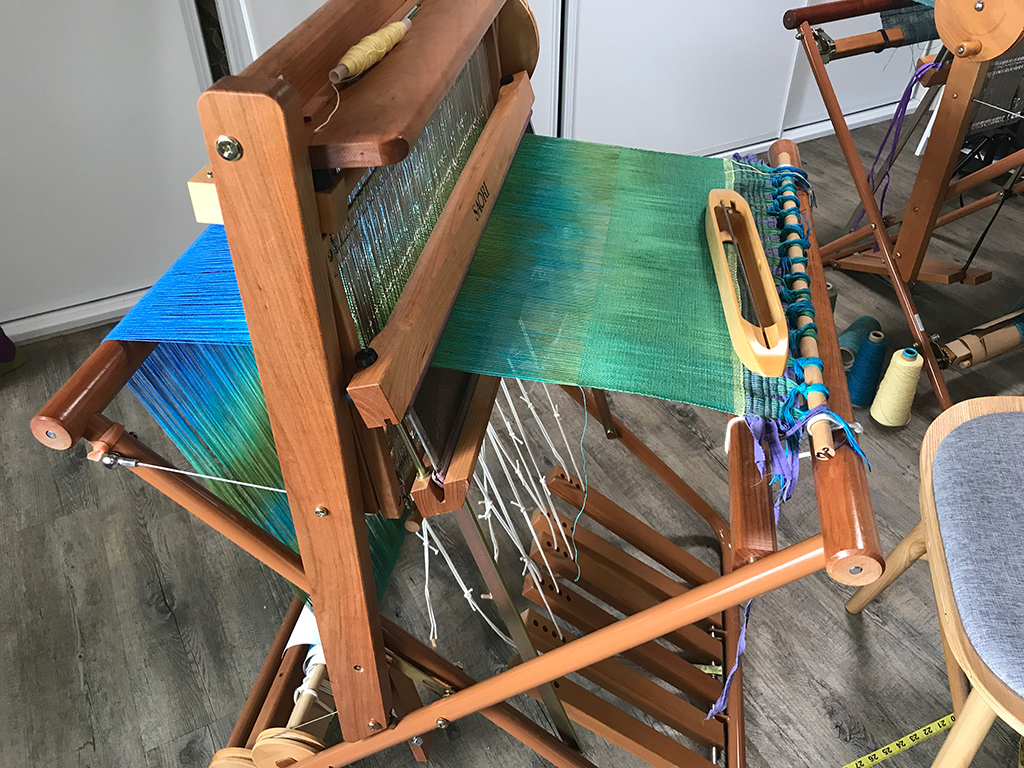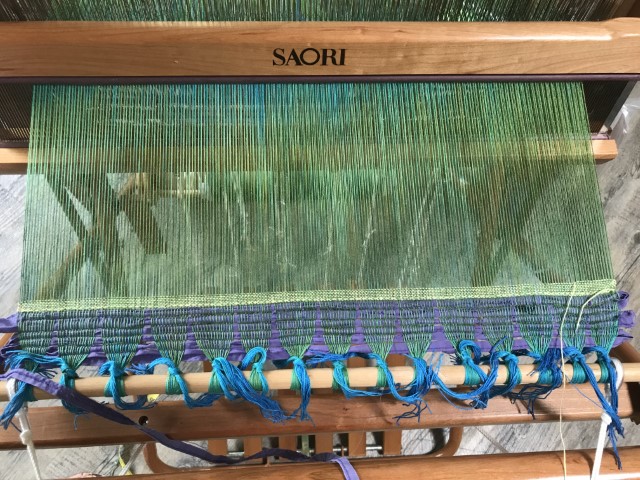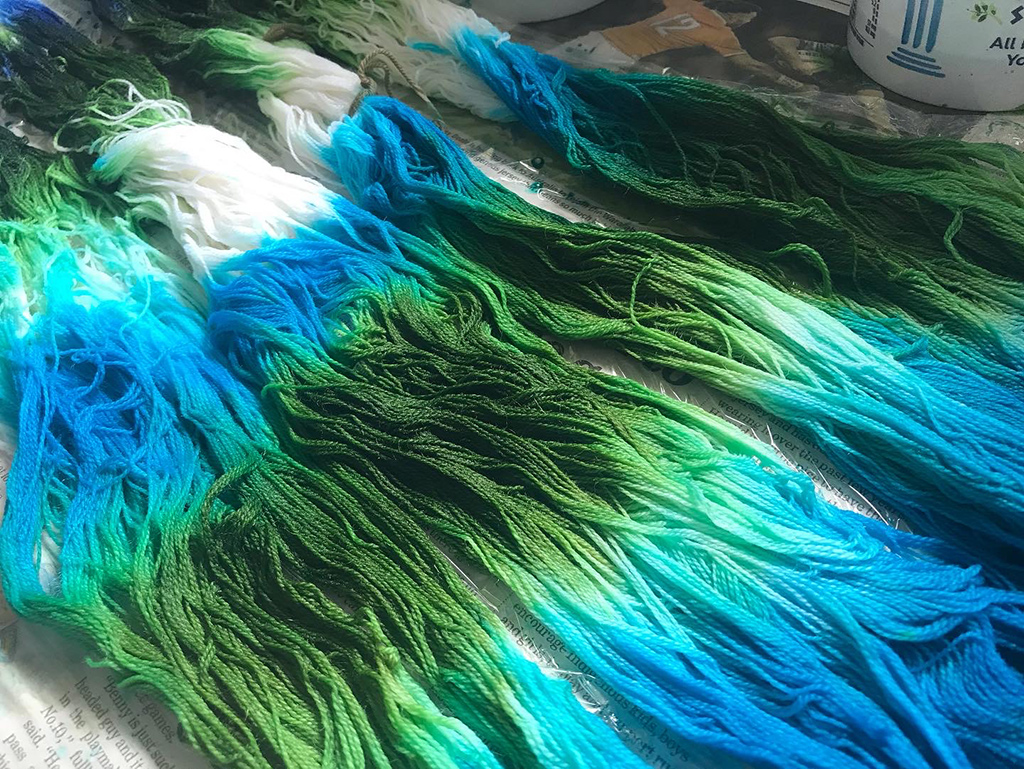I get a lot of questions about weaving a balanced cloth on the Saori loom. Weaving is a huge lifelong…and longer topic. Weaving takes skill and experience. Saori weaving can be quite streamlined and invites a great immediacy for enjoyment and exploration. But when you want to weave a plain balanced cloth you need to be a little more sensitive to your tools, yarns and the skill you build up in your hands for weaving.
Firstly you may have to play around with the sett in your cloth. Normally, as a starting standard, in Saori weaving we thread at 5 epc (ends to the cm) but this can vary and you can do a denser cloth. The prewound warps are designed for threading one end through each dent of the reed thus 5dpc. You can vary this somewhat but is limited. If you are looking to an even cloth with a different density you should plan for it when you wind your own warp. We start to get into sampling territory which is the way of weaving in traditional weaving. Every yarn and suitable sett and cloth purpose is different.
This week I started to wind a cottolin warp for towels and I started by handpainting the warp.
Here you can see the process. I’ve written about this many times and you can see some of my somewhat ancient style of information here and here.
I used a combination of fibre reactive brands in this dyelot. Once you get used to the routine it is quite easy.

Then onto the loom. As I had many more warp threads than usual on my Saori loom (8dpc) I think tying on the warp produces a better result and the warp is a little thick for the clipping rod method, and I was fussier about the tension when I usually don’t need to be.
I’m using the Saori four shaft loom here but still doing a plain weave so you only need the two shafts. Please note that the 4 shaft kit is not currently available.

If I’m not using the lovely clipping rod I have to work even harder! I have to weave a header. I use fabric strips. This evens out all of the warp threads so there is no big gaps in it and gets you up to the nice starting point of the weaving.
Here is a little video of how the weaving goes.



Leave a Reply